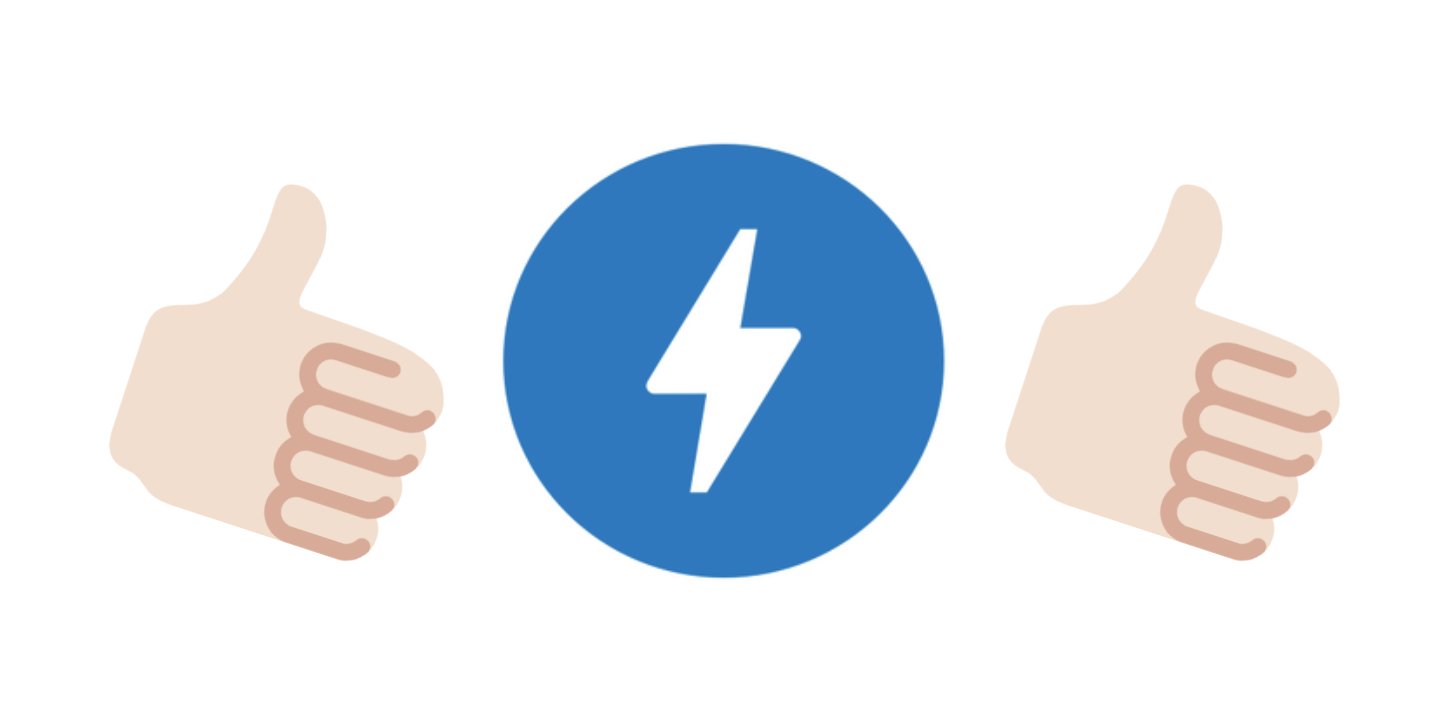The Einstein Marketer blog has been running for a little over a year now.
We’ve experienced rapid growth during this time and seen a massive increase in traffic on our site, proving that blogging definitely isn’t dead.
Our team already had experience building blogs and running content marketing campaigns, so whilst we weren’t blindly entering the blogging world, we were more than aware that…
…the digital landscape is always shifting.
It’s a well commentated fact that the key to content marketing success has never changed: research, create, analyse the stats, recognise trends and be creative with the results.
During our first year, we learnt a lot about these ‘trends’ and in this article we’re going to share the most poignant with you, because without you, none of this would’ve been possible!
How To Improve Your Blog
#1: Targeting Pain Point Keywords
If you’re blogging already, you should have set yourself up with Google Analytics and Search Console. If you’re just starting out, make this a priority.
An integral step in succeeding in content marketing is performance analysis. Google has given everyone the keys to this information with their FREE tools (mentioned above).
Regular performance checks has seen our visits from Organic traffic increase month after month, but this was not achieved by fluke or accident.
We noticed that posts with keywords targeting pain points were much more successful than those focussing on topic names, niches or specific areas of digital marketing.
Searchers who seek answers to their problems are much more qualified and if you’re able to solve/answer them successfully, you will be seen as an authority and expert in your area.
Pain point keywords tend to be questions (which fits in with the growing trend in voice searches) or short statements seeking an answer. If you’re looking for an example, scroll up…
…can you see it?
How To Improve Your Blog is a H2 (sub-head), easily read by search engines, has low competition and extremely qualified searchers who are likely to click on a number of links.
When you create your next article, keep pain point keywords in mind!
#2: Social Proof (Is More Important Than Ever!)

If there’s one thing we can take away from social networks in the last twelve months, it’s that people REALLY care about their data.
The number of highly publicised data breaches has had a knock-on effect for every brand operating online, trust issues. And when there’s a lack of trust, people automatically look to their peers.
Social proof was already a key ingredient for success, but after the last twelve months, it’s never been more important. Our posts have proven it!
The articles that receive the most likes, shares and comments (on social) always get the highest number of clicks, even though they’re seen by a similar audience size.
It’s crucial that you create content that encourages social engagement. A social share (or when somebody specifically tags an individual) transforms an article marketed from a brand to an audience, into a recommendation from a friend. Can you guess which one has more power?
If you’re struggling to generate engagement on your social content promotions, learn how to write better headlines, try improving your copy or feature image and test out your content on a low-budget Facebook engagement campaign.
You can learn more about Facebook Engagement Campaigns in our 2019 ultimate guide.
#3: Feature Images Without Text (or Headline)

A great way to entice readers to your blog is with an eye-catching image posted across your distribution channels.
We’ve published 200+ blogs on Einstein Marketer (in the last year) giving us ample time to test and analyse the click-rate of a variety of feature image styles.
As you might have noticed, images on brightly coloured backgrounds have been a big winner. They pop from newsfeeds and referral sites, encouraging interest.
But what surprised us most was the difference in click-rate when using an image that included a headline, compared to those that don’t.
There is no way of knowing if this image feature is representative of every industry (using content marketing), but it certainly is true of ours. If you are including headlines in your design, it might be time to test and analyse the results.
I can’t be sure why this is the case (although I will definitely perform more tests) but my best prediction is that an image without text creates intrigue, and this increase in intrigue can lead to an increase in user engagement on the actual post itself (giving more of a chance for social proof, headlines and copy to do their work).
#4: AMP Really Does Work

As mentioned earlier, our organic traffic has risen exponentially since we started blogging. A big reason for this is our adoption of AMP.
For those of you who don’t know, AMP stands for Accelerated Mobile Pages. It is a Google run project to increase the load speed of websites for mobile users.
An AMP webpage loads instantly (on mobile) as it removes all the slow-to-load elements and formats the page for speed (amongst a ton of other stuff).
Google likes websites that have enabled AMP and as a result, they show AMP pages high on their search results.
This has significantly increased our organic traffic from mobile users, with AMP pages regularly featuring high on our organic landing pages rankings (found in Acquisition in Google Analytics).
I’ve written an entire guide about AMP, so to prevent myself repeating myself, check it out if you’d like to benefit from more organic traffic: Accelerated Mobile Pages: What is AMP? And How Will It Affect Your Google Ranking?
#5: Everybody Wants to ‘Hack’ Instagram

I hate using the word ‘hack’, but in this case, it was the most suitable word for the job.
Our blog regularly covers the latest news and winning marketing strategies for all the biggest social networks, but in the past twelve months, one of them has consistently gained more attention than any other…
…that’s right, it’s the ‘gram.
Instagram was the world’s fastest growing social network in 2018. This crazy spike in interest has caused a mad scramble for businesses, brands and marketers to discover the hottest shortcuts to success. So, when we drop a guide to Instagram marketing, it receives tons of interest.
There’s good reason for it too, Instagram is primed for brands to showcase their style, generate high engagement and even sell natively. As a result, marketers have becoming increasingly dependent on the photo-sharing network.
As a blogger, it’s crucial you learn how to apply Instagram strategies to your brand. Although the platform isn’t primed to generate clicks and blog visits (links can only be shared in the bio), it will help broaden your brand awareness and allow you to cross promote your other social channels.
Whatever you do, don’t neglect the world’s fastest growing social network!
Two of our most popular articles from the last twelve months (that proved this Instagram theory) were The Ultimate Guide to Instagram Hashtags and Should You Buy Instagram Followers?
#6: Guest Bloggers Are Still Not Learning

As I’m sure our regular readers our aware, we accept guest submissions…
…however…it’s surprising how many terrible pitches we receive every single day! It seems that very few guest authors have learnt from the vast amount of content out there, that has been written to help them get published.
I would love to screenshot a few of the emails we’ve received today alone. However, in the interest of saving blushes, I won’t (you know who you are!).
As a guest author, it’s crucial that you try to build a relationship with the editor as fast as possible. This doesn’t mean being fake, funny or trying to be their best pal, it’s about realising what your relationship is.
An editor is doing you a big favour by publishing your work on their site, and although you are helping them by producing content, you are the one asking for help.
Don’t jump in straight away asking for DoFollow links, don’t use email templates (I see the same few templates all the time, they must rank on the first page of Google), don’t submit work without reading the guidelines, don’t send emails that have clearly been sent to every blog you could find in one bulk message, and please stop sending me guest post topics that have absolutely no relation to the rest of our content!
Show some interest in the blog. Prove your value and expertise. Highlight what you could bring to the table.
I’m sure I speak for most editors when I say, we have more than enough content to work with as it is! If you show no care or effort, why should we?
Every content marketer wants quality content from people with experience, skills and motivation, but the sad fact is, very few are able to demonstrate it!
Conclusion
Watch this space. Next year I’ll be back with another edition of What We Learnt From a Year of Blogging.
The tips and advice that I’ve explained in this article will help to improve your readers experience, boost social followings and most importantly, increase your readership.
A blog is written to be read, and it’s your job to give it every chance possible of doing this!
Be consistent, never sacrifice quality for quantity and keep coming back to Einstein Marketer to stay up to date with the latest trends in digital marketing.
What do you expect to see in this article next year? Let us know!
- Author Details







2 Responses
I can’t believe Einstein Marketer is just over a year old!
You’ve done a great job with this one Josh and the name you choose is just perfect.
The first time I saw your blog in my feed, I thought “Marketing Profs”!
Keep up the good work
Thank you Lily!
We’re doing our best to provide everyone with great content! Really pleased that you’re enjoying our stuff!